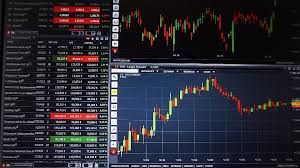
Online forex trading has become increasingly popular in recent years, drawing both novice and experienced traders from around the globe. The ability to trade currencies 24/5 (five days a week) can be a lucrative venture if approached with the right mindset and knowledge. This article will serve as an in-depth guide to online forex trading, covering the basics, necessary tools, strategies, and considerations for traders. For those looking to find reputable trading platforms, online forex trading South Africa Brokers can provide valuable insights and options.
What is Forex Trading?
Forex, or foreign exchange, is the process of exchanging one currency for another. The forex market is the largest and most liquid financial market in the world, with an average daily trading volume exceeding $6 trillion. Forex trading involves speculating on currency pairs, predicting whether a currency will strengthen or weaken against another.
Getting Started with Forex Trading
To start trading forex, you’ll need to follow these essential steps:
1. Choose a Trading Platform
Selecting a reliable trading platform is a vital first step. Research brokers that offer a user-friendly interface, competitive spreads, low commissions, and adequate support. Look for platforms that comply with regulatory standards, ensuring the safety of your funds.
2. Open a Trading Account
Once you’ve chosen a broker, you need to open a trading account. Most platforms offer different account types, including demo accounts, which allow you to practice trading with virtual funds. This is an excellent way to familiarize yourself with the trading platform and develop your strategies without risking real money.
3. Learn the Basics of Forex Trading
Understanding the basics of forex trading is crucial. Key concepts include:
- Currency Pairs: Currencies are traded in pairs, such as EUR/USD or GBP/JPY. The first currency in the pair is the base currency, while the second is the quote currency.
- Pips and Lots: A pip is the smallest price move that a given exchange rate can make. Currency is traded in lots, which are standard units of measurement in forex.
- Leverage: Leverage allows traders to control a larger position with a smaller amount of capital. Although beneficial, it increases the risk of significant losses.
Developing a Trading Strategy
Developing a solid trading strategy is essential for long-term success. Here are some popular strategies:
1. Day Trading
This strategy involves entering and exiting positions within the same trading day. Day traders use short-term price movements, capitalizing on volatility and market trends.
2. Swing Trading
Swing traders take advantage of price swings over several days or weeks, holding positions longer than day traders. This strategy requires patience and market analysis to identify potential turning points.
3. Scalping

Scalping is a high-frequency trading strategy that aims to “scalp” small profits from small price changes. Scalpers often execute dozens or even hundreds of trades within a single day.
Tools and Resources for Forex Traders
Successful forex trading relies heavily on the right tools and resources. Here are some of the most valuable:
1. Economic Calendar
An economic calendar provides important economic indicators and events that can impact currency prices. Familiarizing yourself with upcoming releases allows you to prepare for potential market movements.
2. Technical Analysis Tools
Charting tools and indicators help traders analyze past price movements and predict future trends. Popular tools include Moving Averages, Relative Strength Index (RSI), and Bollinger Bands.
3. News Feeds and Analysis
Staying updated with global news and financial analysis can greatly influence trading decisions. Utilize news feeds and reputable analysis from financial experts to enhance your trading knowledge.
Risk Management in Forex Trading
Effective risk management is essential for preserving capital and ensuring long-term success in forex trading. Here are some strategies:
1. Setting Stop-Loss Orders
Stop-loss orders automatically close a position when the market reaches a predetermined price, limiting potential losses. This is a crucial tool for risk management.
2. Diversifying Your Portfolio
Instead of putting all your capital into a single trade or currency pair, consider diversifying your portfolio to spread risk across multiple investments.
3. Position Sizing
Determine the appropriate position size based on your account balance and risk tolerance. Avoid risking more than a small percentage of your total capital on a single trade.
Conclusion
Online forex trading offers vast opportunities for those willing to invest time and effort into learning the markets. By understanding the fundamentals, developing a robust trading strategy, and employing effective risk management, traders can improve their chances of success. As the forex market continues to evolve, staying informed and adaptable is critical. Happy trading!
